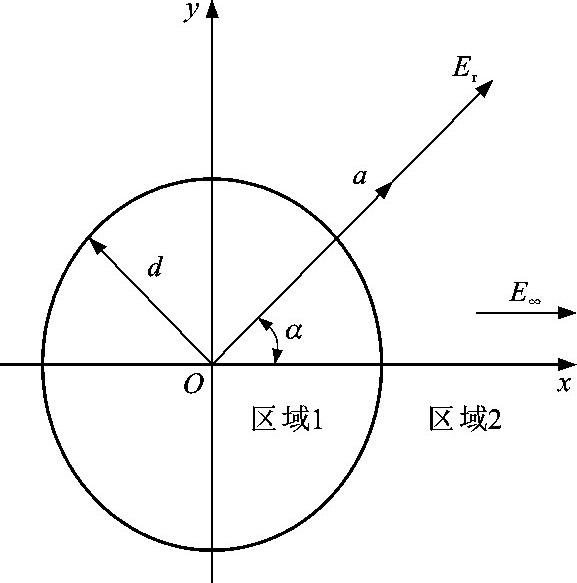New method of dust removal by negative ions in construction tunnel
Article Text (Baidu Translation)
-
摘要: 在施工隧道通风换气时, 为了快速稀释粉尘, 加快施工进度, 引入负离子除尘新方法, 并分析了其应用的可行性; 利用粉尘颗粒荷电理论研究了粉尘颗粒的荷电量, 推导了粉尘颗粒在负离子净化系统外电场作用下的饱和荷电量计算公式; 根据施工隧道的环境特点, 在粉尘沉降主动力为电场力和重力时分析了粉尘颗粒的受力情况, 并利用牛顿第二定律推导了粉尘颗粒的沉降算法; 模拟隧道环境进行了室内试验, 依照室内试验获取的安装参数确定隧道试验方案后进行了现场试验, 并利用现场测试结果分析了负离子除尘新方法的使用效果、机理和沉降算法的准确性。研究结果表明: 在使用和未使用负离子净化系统的1个施工周期内, 试验段呼尘消除率分别为51%和20%, 超过《公路隧道施工技术规范》 (JTG F60—2009) (简称《规范》) 中呼尘短时间接触容许浓度8mg·m-3的时间分别为1、12h, 使用负离子净化系统后, 呼尘时间加权平均浓度从6.38mg·m-3降至3.10mg·m-3, 满足《规范》中不大于4mg·m-3的要求, 即采用新方法可快速、高效地净化施工隧道内的空气; 施工隧道采用负离子除尘新方法的机理可使用粉尘荷电理论和牛顿第二定律进行解释; 在粉尘主要为PM10的相似工况下, 利用沉降算法、室内试验和现场试验得出的粉尘消除时间分别为14、18、20min, 采用算法得出的粉尘沉降时间需要考虑的综合影响系数为1.31.4。Abstract: In order to dilute the dust during the ventilation for construction tunnels, so as to speed up the construction progress, a new method of dust removal using negative ions was introduced, and the feasibility of the new method was analyzed. Using the charge theory of dust particles, the charge of dust particles was studied, and the saturated charge formula of dust particles in the external electric field of a negative ion purification system was obtained. According to the environmental characteristics of construction tunnel, the dust particles' stress conditions were analyzed when the dust settling active forces were electric field force and gravity. The Newton's second law was used to deduce the settlement algorithm of dust particles. The indoor test was carried out through the simulation of a tunnel environment, and the field test was carried out after the tunnel test scheme was determined via the installation parameters obtained by the indoor test. The field test results were used to analyze the accaracy of the effect and mechanism of the negative ion dust removal method and settlement algorithm. Research result shows that duringaconstruction period, the respirable dust removal rates are 51% and 20%, respectively, with and without the negative ion purification system in the test section, and when the respirable dust concentration exceeds the permissible concentration-short term exposure limit of 8 mg·m-3 in Technical Specification for Construction of Highway Tunnel (JTG F60—2009) (standardfor shot), the time durations are 1 and 12 h, respectively. The time-weighted average concentration of respirable dust reduces from 6.38 mg·m-3 to 3.10 mg·m-3 after using the system, which meets the standard's requirement of the time-weighted average concentration not exceeding 4 mg·m-3. Therefore, the new method can quickly and efficiently purify the air during tunnel construction. The mechanism of the negative ion technology used for dust removal during tunnel construction can be explained by the charge theory of dust particles and Newton's second law. In a similar working condition where the main dust is PM10, the dust removal times obtained by the dust settling algorithm, the indoor test and the field test are 14, 18 and 20 min, respectively. The dust settling time calculated by the dust settling algorithm should consider the comprehensive influence coefficient of 1.3-1.4.
-
Key words:
- tunnel engineering /
- construction tunnel /
- negative ion /
- dust particle /
- removal rate
-
表 1 相关参数取值
Table 1. Values of relevant parameters

-
[1] 胡根友. 长大隧道施工通风技术应用研究[D]. 成都: 西南交通大学, 2008.HU Gen-you. Study on ventilationtechnical application of long tunnel construction[D]. Chengdu: Southwest Jiaotong University, 2008. (in Chinese). [2] 吴兆波, 郭强, 王金良, 等. 置换通风下不同风速对负离子净化PM2.5的研究[J]. 工业安全与环保, 2016, 42 (6): 37-41. doi: 10.3969/j.issn.1001-425X.2016.06.010WU Zhao-bo, GUO Qiang, WANG Jin-liang, et al. Research on the effect of different air supply velocities on the negative ions purification for PM2.5 under displacement ventilation[J]. Industrial Safety and Environmental Protection, 2016, 42 (6): 37-41. (in Chinese). doi: 10.3969/j.issn.1001-425X.2016.06.010 [3] 曹正卯. 长大隧道与复杂地下工程施工通风特性及关键技术研究[D]. 成都: 西南交通大学, 2016.CAO Zheng-mao. Study on ventilation characteristics and key techniques of long tunnels and complicated underground engineering in the construction stage[D]. Chengdu: Southwest Jiaotong University, 2016. (in Chinese). [4] 沈晋明, 饶松涛, 王玲玲. 负离子技术对地铁站环境改善效果的研究[J]. 暖通空调, 2009, 39 (2): 122-125. doi: 10.3969/j.issn.1002-8501.2009.02.029SHEN Jin-ming, RAO Song-tao, WANG Ling-ling. Study on improving effects of negative ion technique on environment in an underground railway station[J]. Heating Ventilating and Air Conditioning, 2009, 39 (2): 122-125. (in Chinese). doi: 10.3969/j.issn.1002-8501.2009.02.029 [5] 成霞, 钟柯. 不同送风方式对室内负离子分布影响的数值模拟[J]. 建筑热能空调工程, 2011, 30 (1): 50-54. https://www.cnki.com.cn/Article/CJFDTOTAL-JZRK201101012.htmCHENG Xia, ZHONG Ke. Numerical simulation of different types of ventilation's influence on indoor negative ion spreading in air[J]. Building Energy and Environment, 2011, 30 (1): 50-54. (in Chinese). https://www.cnki.com.cn/Article/CJFDTOTAL-JZRK201101012.htm [6] MAYYA Y S, SAPRA B K, KHAN A, et al. Aerosol removal by unipolar ionization in indoor environments[J]. Journal of Aerosol Science, 2004, 35 (8): 923-941. doi: 10.1016/j.jaerosci.2004.03.001 [7] FLETCHER L A, NOAKES C J, SLEIGH P A, et al. Air ion behavior in ventilated rooms[J]. Indoor and Built Environment, 2008, 17 (2): 173-182. doi: 10.1177/1420326X08089622 [8] 向晓东, 陈宝智, 张国权. 荷电粉尘在交变电场中的凝并与收集[J]. 东北大学学报: 自然科学版, 1999, 20 (6): 615-618. doi: 10.3321/j.issn:1005-3026.1999.06.015XIANG Xiao-dong, CHEN Bao-zhi, ZHANG Guo-quan. Coagulation of bipolar charged particles in A-C electric field[J]. Journal of Northeastern University: Natural Science, 1999, 20 (6): 615-618. (in Chinese). doi: 10.3321/j.issn:1005-3026.1999.06.015 [9] 贺美陆. 湍流场中可吸入颗粒物双极荷电凝聚机理的实验研究[D]. 北京: 清华大学, 2004.HE Mei-lu. Experimental study on the mechanism of bipolar charging agglomeration of fine particles in turbulent flow[D]. Beijing: Tsinghua University, 2004. (in Chinese). [10] 张向荣, 王连泽, 朱克勤. 外电场对荷电颗粒静电凝聚的影响[J]. 清华大学学报: 自然科学版, 2005, 45 (8): 1107-1109. doi: 10.3321/j.issn:1000-0054.2005.08.027ZHANG Xiang-rong, WANG Lian-ze, ZHU Ke-qin. Influence of external electric field on the coagulation of electrically charged particles[J]. Journal of Tsinghua University: Science and Technology, 2005, 45 (8): 1107-1109. (in Chinese). doi: 10.3321/j.issn:1000-0054.2005.08.027 [11] 赵爽. 电凝并脱除可吸入颗粒物的实验研究[D]. 杭州: 浙江大学, 2006.ZHAO Shuang. Experiment study on removal of PM10 by electric agglomeration[D]. Hangzhou: Zhejiang University, 2006. (in Chinese). [12] 毛程奇. 交变电场粒子荷电凝并实验研究[D]. 大连: 大连海事大学, 2007.MAO Cheng-qi. Experiment study in particles charge and agglomeration at AC electric field[D]. Dalian: Dalian Maritime University, 2007. (in Chinese). [13] 陈旺生, 向晓东, 陆继东. 偶极荷电静电凝并除尘器收尘机理及性能研究[J]. 环境工程学报, 2008, 2 (7): 973-976. https://www.cnki.com.cn/Article/CJFDTOTAL-HJJZ200807023.htmCHEN Wang-sheng, XIANG Xiao-dong, LU Ji-dong. Study on collecting principle and performance of dipolar charging electrostatic agglomerator[J]. Chinese Journal of Environmental Engineering, 2008, 2 (7): 973-976. (in Chinese). https://www.cnki.com.cn/Article/CJFDTOTAL-HJJZ200807023.htm [14] 白敏菂, 王少雷, 陈志刚, 等. 烟道荷电凝并电场对电捕集微细粉尘效率的影响[J]. 中国环境科学, 2010, 30 (6): 738-741. https://www.cnki.com.cn/Article/CJFDTOTAL-ZGHJ201006007.htmBAI Min-di, WANG Shao-lei, CHEN Zhi-gang, et al. Effect of submicron dust charging and coagulation in the flue on the efficiency of ESP[J]. China Environmental Science, 2010, 30 (6): 738-741. (in Chinese). https://www.cnki.com.cn/Article/CJFDTOTAL-ZGHJ201006007.htm [15] 朱继保. 细颗粒物的电收集技术研究[D]. 杭州: 浙江大学, 2010.ZHU Ji-bao. Fine particle collection with electrostatic precipitation[D]. Hangzhou: Zhejiang University, 2010. (in Chinese). [16] WATANABE T, TOCHIKUBO F, KOIZUMI Y, et al. Submicron particle agglomeration by an electrostatic agglomerator[J]. Journal of Electrostatics, 1995, 43 (4): 367-383. [17] JI J H, HWANG J, BAE G N, et al. Particle charging and agglomeration in DC and AC electric fields[J]. Journal of Electrostatics, 2004, 61 (1): 57-68. doi: 10.1016/j.elstat.2003.12.003 [18] 邓鹤鸣, 何正浩, 许宇航, 等. 雾霾对冲击放电路径影响特性的分析[J]. 高电压技术, 2009, 35 (11): 2669-2673. https://www.cnki.com.cn/Article/CJFDTOTAL-GDYJ200911014.htmDENG He-ming, HE Zheng-hao, XU Yu-hang, et al. Effects of the size of macroparticles on two-phase mixture discharges[J]. High Voltage Engineering, 2009, 35 (11): 2669-2673. (in Chinese). https://www.cnki.com.cn/Article/CJFDTOTAL-GDYJ200911014.htm [19] 谭震宇, 杨金洪, 徐明铭, 等. 雾霾对高压直流输电线路电晕离子流场的影响[J]. 高电压技术, 2016, 42 (12): 3844-3852. https://www.cnki.com.cn/Article/CJFDTOTAL-GDYJ201612021.htmTAN Zhen-yu, YANG Jin-hong, XU Ming-ming, et al. Influence of fog-haze on corona ion flow field of HVDC transmission lines[J]. High Voltage Engineering, 2016, 42 (12): 3844-3852. (in Chinese). https://www.cnki.com.cn/Article/CJFDTOTAL-GDYJ201612021.htm [20] SUNAGA Y, SAWADA Y. Method of calculating ionized field of HVDC transmission lines and analysis of space charge effects on RI[J]. IEEE Transactions on Power Apparatus and Systems, 1980, 99 (2): 605-615. [21] SUNAGA Y, AMANO Y, SUGIMOTO T. Electric field and ion current at the ground and voltage of charged objects under HVDC lines[J]. Power Engineering Review, 1981, 1 (4): 75. [22] 崔翔, 周象贤, 卢铁兵. 高压直流输电线路离子流场计算方法研究进展[J]. 中国电机工程学报, 2012, 32 (36): 130-141. https://www.cnki.com.cn/Article/CJFDTOTAL-ZGDC201236019.htmCUI Xiang, ZHOU Xiang-xian, LU Tie-bing. Recent progress in the calculation methods of ion flow field of HVDC transmission lines[J]. Proceedings of the CSEE, 2012, 32 (36): 130-141. (in Chinese). https://www.cnki.com.cn/Article/CJFDTOTAL-ZGDC201236019.htm [23] JANISCHEWSKYJ W, CELA G. Finite element solution for electric fields of coronating DC transmission lines[J]. IEEE Transactions on Power Apparatus and Systems, 1979, 98 (3): 1000-1012. [24] DENISOV S I, PEDCHENKO B O. Drift of suspended ferromagnetic particles due to the Magnus effect[J]. Journal of Applied Physics, 2017, 121 (4): 1-10. [25] SEIFERT J. A review of the Magnus effect in aeronautics[J]. Progress in Aerospace Sciences, 2012, 555: 17-45. [26] STUREK W B, KAYSER L D, NIETUBICZ C J, et al. Computations of magnus effects for a yawed, spinning body of revolution[J]. AIAA Journal, 2012, 16 (7): 687-692. [27] 黎霞, 高燕希, 宁黎磊, 等. 隧道衬砌介电常数试验与理论分析[J]. 中国公路学报, 2008, 21 (5): 70-74. doi: 10.3321/j.issn:1001-7372.2008.05.013LI Xia, GAO Yan-xi, NING Li-lei, et al. Experimental and theoretical analysis on permittivity of tunnel lining[J]. China Journal of Highway and Transport, 2008, 21 (5): 70-74. (in Chinese). doi: 10.3321/j.issn:1001-7372.2008.05.013 [28] 武义凯. 公路隧道壁面通风摩阻损失系数研究[D]. 西安: 长安大学, 2015.WU Yi-kai. Research on the ventilation wall friction loss of highway tunnel[D]. Xi'an: Chang'an University, 2015. (in Chinese). [29] 王勇勤, 段丽华, 徐国胜, 等. 基于Monte-Carlo方法的静电除尘器除尘效率[J]. 环境工程学报, 2012, 6 (8): 2775-2781. https://www.cnki.com.cn/Article/CJFDTOTAL-HJJZ201208058.htmWANG Yong-qin, DUAN Li-hua, XU Guo-sheng, et al. Efficiency of electrostatic precipitator based on Monte-Carlo method[J]. Chinese Journal of Environmental Engineering, 2012, 6 (8): 2775-2781. (in Chinese). https://www.cnki.com.cn/Article/CJFDTOTAL-HJJZ201208058.htm -





 下载:
下载:


















